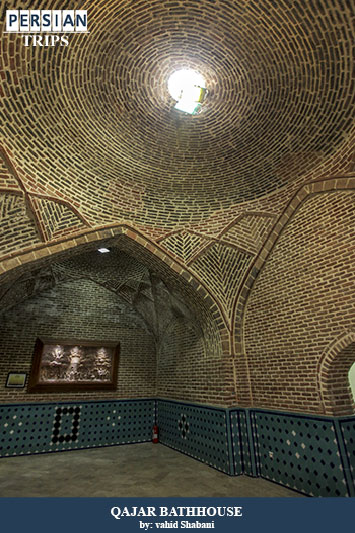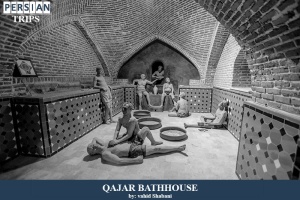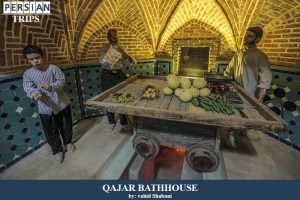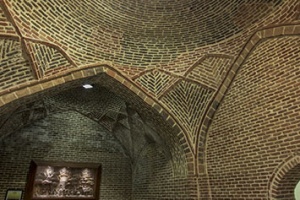Qazvin Qajar bathhouse

Qazvin Qajar bathhouse was built by the order of Shah Abbas Safavid, the famous king of Safavid dynasty in Qazvin province. The construction of this building is related to the year 1647.
It has been 3 centuries since the construction of this bathhouse. Despite these three centuries, it still has its own beauty and appearance. The visual effects of this building are so much that it attracts every viewer and tourist. At present, this bath is mentioned as one of the largest museums in Qazvin and in the past it was mentioned as the largest baths in Iran. If you are planning to travel to Qazvin, you can join Persiantrips tourism tours and visit this spectacular monument. By visiting this museum, in addition to seeing one of the most beautiful buildings left from Qajar, you can get acquainted with the customs of Qazvin province and visit other buildings.
Architectural features of Qazvin Qajar bathhouse
Qazvin Qajar bathhouse was also known as Hamam Shahi (the royal bath) in the past. This bath has an area of 1045 meters of useful space. This bathroom has 3 main parts: Garm Khaneh, Sarbineh and Miandar. You will visit every part of this building upon arrival. Qazvin Qajar bath has other parts, of which these three parts are the main parts, which separate the male and female sections. The main door of the bathhouse opens into the south section and reaches Sarbineh through winding stairs. In Sarbineh, there is a very small and beautiful pond, which has 6 separate Shah neshin. It can be said that each of these sections has an arch and an octagonal plan. The top of this bathhouse, like any other bath, depending on its use, has been the rest and changing room of Qajar bath in Qazvin. The beautiful Sarbineh of this building consists of two parts, west and east, and has two truncated arches. Garmkhaneh in the traditional baths such as Qajar bath in Qazvin includes parts such as: cold water pool, Gorbero (cat tunnels), hot water storage and Ayan neshin. The men's and women's parts were also made in the form of crosses. There were washing rooms on the left and right. They also used clay pots to bring water. The interior of the bathroom is completely covered with tiles. Using large cut stones of marble, the floor of the inside of the bath has been paved. This bath has been registered in 2000 by the cultural heritage under number 12601. Also, this bath became an anthropological museum in 2007.
Tags: Attractions of Qazvin province, Qazvin province, Qazvin pvince


